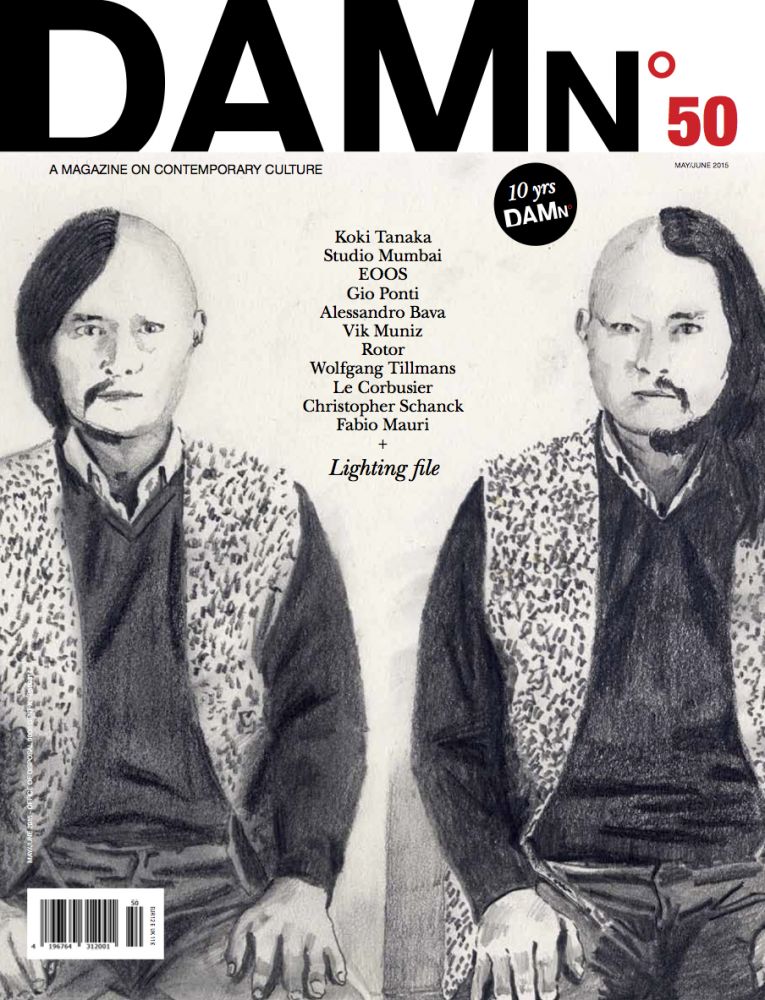An Eclectic Modernist - The essential Gio Ponti
Exhibition 80!Molteni, Galleria di Arte Moderna, Milan, Italy, until 30 June.

Pirelli Tower (1961) – its hexagonal floor plan creates a slim appearance.
The marked revival of Gio Ponti’s furniture pieces has been impactful. This could suggest that he was ahead of his time by at least half-a-century. On the other hand, it could simply mean that his work is completely timeless, a tribute to the care and attention he gave to the human side of design. Unfazed by trends and the general hubbub surrounding architecture and design, he listened to himself and adhered to his own standards, setting about his work in a manner that was particular. DAMN° spoke with Francesca Molteni of Molteni&C about the re-edition of the master’s furniture.
He was the lateral thinker of modernity: Milanese architect, designer, artist, and publisher Gio Ponti. Instead of preaching the right angle and the white cube, he created sensual, refined spaces and objects, which appear to withstand the advance of time. Most of its furniture pieces, designed as individual objects, have now come into serial production. Gio Ponti was a cosmopolitan, freethinker, and visionary rolled into one. While most Italian architects of the 1950s and 60s built only in their own country, he also realised projects in Hong Kong, Denver, Baghdad, Caracas, São Paolo, and New York. But despite all this, he especially left his mark on his hometown of Milan. Ponti designed 44 buildings there between 1925 and 1971, including the rationalist transmission tower Torre Littoria (1933) in Sempione Park, and his most famous building to date: the sleek Pirelli Tower (1956 to 1961), which owes its amazingly slim appearance to a hexagonal floor plan.
That Gio Ponti could venture a different look at modernity from the majority of his colleagues around the globe is thanks to his particular curriculum vitae. After studying architecture at the Politecnico di Milano, he did begin his career in the normal way, at the drawing board, but at Milan-based porcelain manufacturer Richard Ginori, whose art direction he then took over in 1923, at the age of 32. Up until 1930 he designed and redesigned products, and oversaw the design of catalogues, photographs, displays, and even price tags. He felt at ease in his role as art and brand director – long before those terms existed. Yet he soon moved on. Ponti became the first director of the Triennale di Milano and after the opening exhibition in 1930, he also led four subsequent editions. He was convinced that design requires special mediation. In 1928 he founded the magazine Domus, for which he was publisher and editor-in-chief until his death in September 1979. In 1954 he initiated the Italian design Oscar, Compasso d'Oro – designing the golden compass himself. He also founded the furniture and lighting company FontanaArte, specialised in the processing of glass, to expand his experience in that terrain.
Gio Ponti’s apartment in Via Dezza in Milan became a manifesto for everyday life. It was the entire opposite of a classic modernist white box, having a floor and ceiling of coloured tiles made by his friend, sculptor Fausto Melotti. Ponti also worked closely with Milanese graphic designer Piero Fornasetti, in whose house he regularly passed-by for lunch. One reason being that the Polytechnic was around the corner, as Ponti taught there in the 1940s and 50s. While he designed the shapes of the desks, cabinets, tables, and beds, Fornasetti made the décors, ranging from colourful flower motifs to fake newspaper pages.
That he worked with artists on ideas for the home caused some doomsday predictions. Many rationalists accused him of being decorative. In fact, for Ponti the surface was anything but superficial. It was a tool with which to fit objects into everyday life. “I think he is still very contemporary, for that reason. He was acting without prejudice, by thinking about
our behaviour and how we can live in a better environment”, says Francesca Molteni. The Milanese curator encouraged her family’s furniture company Molteni&C to put many of Ponti‘s designs into serial production. This year, Molteni&C celebrated its 80th anniversary with a major retrospective at the Villa Reale in Milan. Many of Ponti’s designs played a central role in the exhibition, which was curated by Jasper Morrison.
Unlike the famous Supperleggera chair (1957), which is produced by Cassina and weighs just 1700 grams, most of Ponti’s furniture comprised of unique pieces or small series. Thus, Francesca Molteni found it appropriate to initiate a re-edition of his works. In 2012, a collection of eight pieces was launched at the Milan furniture fair and since then has been extended continuously. “We tried to stay very close to the originals, so the pieces look exactly the same as in the past but with some technological updates, like added drawer mechanisms. We received approval for all the details from Ponti’s heirs”, says Francesca Molteni.
Gio Ponti was a perfectionist. He often worked 14 hours in a row, making small changes to his designs over and over again. He placed particular attention on the sensuality of materials and the tactility of woods. “When I explain the collection to people, I always tell them to touch it. That is very important to understanding the details and proportions”, adds Francesca Molteni. To repeat the same model for other clients was not an option for him. Instead, he looked for individual approaches and mastered the sensual as well as the rational. The Montecatini chair, made of aluminium, is a technical masterpiece that nevertheless did not forego the human scale. The chair was designed in 1935 for the offices of the Montecatini company, an aluminium manufacturer. For that reason, Ponti wanted every detail of the building to be made in that material – as well as the interior. “Compared to the majority of his work, the chair looks quite unusual. One reason is certainly the fact that he needed 1500 chairs. So he was looking for something that was not expensive and that was very technical and very comfortable”, informs Francesca Molteni.
At this year’s Salone in Milan, Molteni&C presented the slender side table D.552.2 and the organic armchair D.154.2, which Gio Ponti had designed for a private villa in Caracas in 1954. In addition, the folding chair D.270.1 was presented with new fabrics. This compact piece of furniture was important to Ponti. Designed 35 years after the Montecatini chair, it took a completely different direction, having a narrow, foldable seat. In a period in which society was changing and houses were getting a bit smaller, the conventions of living also had to be questioned.
Ponti was thinking about furniture that could move from one room to another, and disappear if no longer needed. Instead of plastic – the material of the moment in 1970 – he used wicker, leather, and fabric for the seats – which are now also available in bright colours. “Ponti always wanted to be remembered for that chair and for the Co-Cathedral in Taranto, Southern Italy. Neither of them was his most popular project. But he wrote that he would like to be remembered for exactly those two works”, says Francesca Molteni. In this way, Ponti was entirely himself. It isn’t always the noisy or obvious things that leave a lasting impression. The essence of a lifetime’s work is often revealed in the nuances. ‹
 Domus magazine was founded by Gio Ponti in 1928, where he remained as publisher and editor-in-chief until his death in 1979.
Domus magazine was founded by Gio Ponti in 1928, where he remained as publisher and editor-in-chief until his death in 1979.
 Gio Ponti’s own apartment in Via Dezza, designed between 1956 and 1957.
Gio Ponti’s own apartment in Via Dezza, designed between 1956 and 1957.
 Chest of drawers D.655.1 (1955), made with various types of wood.
Chest of drawers D.655.1 (1955), made with various types of wood.
 A drawing of the D.270.1 chair, during the design process.
A drawing of the D.270.1 chair, during the design process.
 Side table D.552.2 (1950s) in wood, with a glass top
Side table D.552.2 (1950s) in wood, with a glass top
 The “wide chair with a narrow and foldable seat”, D.270.1 (1970)
The “wide chair with a narrow and foldable seat”, D.270.1 (1970)
 Portrait Gio Ponti © Gio Ponti Archives.
Portrait Gio Ponti © Gio Ponti Archives.
 Bookcase (1957), made for Ponti‘s own apartment.
Bookcase (1957), made for Ponti‘s own apartment.
 This article appeared in DAMN°50. Order your personal copy.
This article appeared in DAMN°50. Order your personal copy.

